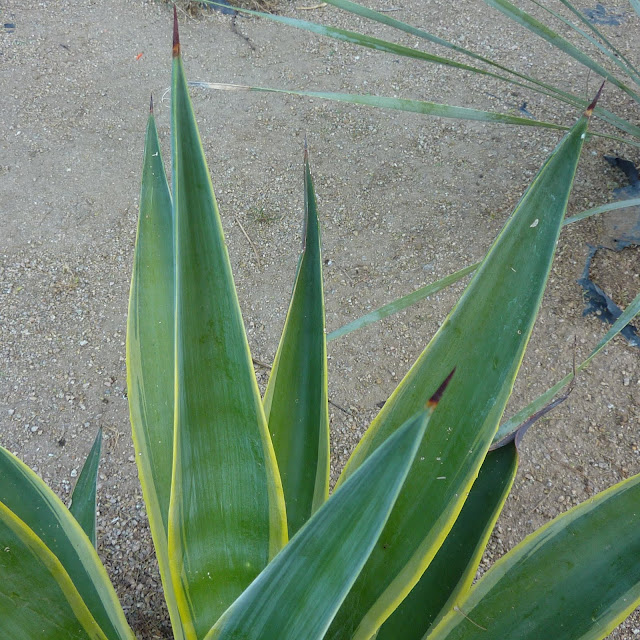 |
| JoshuaTree just ready to burst into full flower. Driving along !-10 through the desert East of Palm Springs we saw many such stunning trees. |
For those of you that have read the previous two posts about our March roadtrip, you are aware that almost nothing went as planned. The early return to MuRefuge continued along the vein stamped the very first day driving South on I-5. We decided to cut our trip short and return from Phoenix since the portion remaining focused on hiking and BEing out experiencing the Zuni and Hopi lands. I was adamant about not returning by the same route, so in the end we chose to drive North on Highway 395, one of our very favorite drives.
The bright spot driving along I-10 was feasting on the glorious desert wildflowers
blooming. We noted mostly yellow ones, and right along the sides of the highway were full flowering Desert Gold (Geraea canescens) intermingled further away from the roadside with Ocotillo (Fourquieria splendens) which had buds but not open flowers yet, Creosote bush (Larrea tridentata), and Brittlebush (Encelia farinosa) making a feast for our eyes.
Once we started driving North on 395 our prime experience was wind; wind so fierce that as we neared the dry Owens Lake bed, aka the Owens Valley, we could not see the mountains on either side of the highway. We stopped at the Eastern Sierra Interagency Visitors Center, stepping out of the car and almost getting knocked over by the wind which was filled with alkaline dust. We had visualized in our planning to sit outside and enjoy our picnic lunch on one of the many picnic tables dotting the area. Instead we all ate inside the car as the wind howled about us. By the time we reach Bishop the air was a bit clearer. We checked in about the weather, watching the Reno station we had grown accustom to watching on our many month long stays in Bridgeport. Three storms over three days, dumping not inches of snow in the Sierras but rather feet, were predicted. We had no snow tires nor warm clothes and our car’s heater/air conditioning system worked only intermittently.
 |
| The air was clear as we left Bishop. As you can see from this photo we could enjoy the beauty of the Sierra Nevada Mountains with snow in the higher elevations. |
So we decided to backtrack on Highway 395 and drive Highway 14 to Highway 58 over the Tehachapi pass through the mountains into the lower end of the Central Valley on Highway 99. Again it was windy, so windy we bypassed a lovely spot for lunch (Red Rock Canyon with stunning colorful rock formations), later finding a wonderful picnic table on a family run fruit farm which they have made into a you pick, family outing sort of place. Green! After a week in the desert we were all struck by the green everywhere as far as the eye could see in the rolling hills of the Tehachapi Mountains which also boasted huge splotches of orange, California poppies in bloom. We rejoiced to each other, “Welcome home!"
And now we have resettled into MuRefuge, connecting with our roots here and allowing the healing powers of place to seep into our BEings. As the warmth and sunshine now follow the some 12.5 inches of rain that fell in our absence, the native wildflowers planted here are blooming.
 |
| Douglas Meadowfoam (Limnanthes douglasii |
 |
| Coastal Poppy (Eschscholzia californica var. californica) with native pollinators busy at their job. |
 |
| ‘Yankee Point’ (Ceanothus griseus horizontalis) |
As you enjoy the stunning beauty of the MuRefuge wildflower photos above, please take time to



















